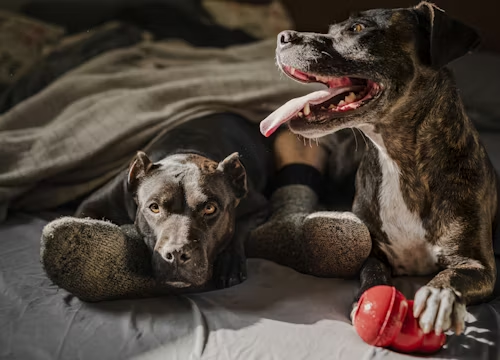Dogs are fascinating creatures, and understanding their behavior can greatly enhance the bond between you and your furry friend. As a professional dog behaviorist, I’ve seen firsthand how a deeper understanding of canine behavior can lead to happier and healthier relationships. In this blog post, we’ll explore various aspects of dog behavior, including body language, social interactions, common behavioral issues, and how to foster positive behavior in your dog.
1. The Basics of Canine Behavior
a. Instincts and Social Structure
Dogs are pack animals by nature. Understanding this instinctual behavior can help us comprehend how they interact with humans and other dogs. The social structure within a pack plays a critical role in how dogs establish hierarchy and relationships.
b. Nature vs. Nurture
While genetics do influence behavior, a dog’s environment and upbringing significantly shape its personality. Factors like socialization, training, and past experiences can lead to behavioral differences even among dogs of the same breed.
2. Canine Body Language
Understanding dog body language is crucial for interpreting how they feel. Here are some common signs to look for:
a. Tail Position
- Wagging Tail: Often indicates excitement or happiness, but pay attention to the speed and height; a high, fast wag can mean over-excitement.
- Tucked Tail: Suggests fear or submission.
- Stiff, High Tail: Indicates alertness or potential aggression.
b. Ears and Eyes
- Relaxed Ears: Indicate a calm dog.
- Ears Back: Can signify submission, fear, or uncertainty.
- Direct Stare: Often a sign of aggression or challenge, while a soft gaze typically indicates trust.
c. Mouth Expressions
- Relaxed Mouth: Shows contentment.
- Lips Curled Back or Snarling: Signifies a warning or aggression.
- Panting: Can indicate stress, excitement, or a need to cool down.
3. Social Interactions
a. Dogs and Humans
Dogs are keen observers of human behavior. They respond to body language, tone of voice, and facial expressions. Establishing a positive relationship involves clear communication and consistency in training.
b. Dogs and Other Dogs
Canine social interactions can vary widely. Some dogs are naturally more social, while others may be shy or aggressive. Proper socialization during the early stages of life is critical for fostering good behavior around other dogs.
4. Common Behavioral Issues
a. Aggression
Aggression can stem from fear, territorial instincts, or resource guarding. It’s essential to identify the triggers and consult with a professional if your dog exhibits aggressive behavior.
b. Separation Anxiety
Many dogs experience anxiety when left alone. Signs include excessive barking, destructive behavior, and attempts to escape. Training methods, such as gradual desensitization, can help alleviate this issue.
c. Excessive Barking
Barking is a natural behavior, but excessive barking can be problematic. Determine the cause—whether it’s boredom, fear, or a need for attention—and address it with appropriate training and enrichment activities.
5. Positive Reinforcement Training
Using positive reinforcement is one of the most effective ways to encourage good behavior. This method involves rewarding desired behaviors rather than punishing unwanted ones. Here’s how to implement it effectively:
a. Timing is Key
Reward your dog immediately after they exhibit the desired behavior to help them make the connection.
b. Use Varied Rewards
Incorporate treats, praise, and playtime as rewards to keep your dog motivated and engaged.
c. Be Consistent
Consistency is crucial. Use the same commands and cues to avoid confusing your dog.
6. Fostering a Happy, Well-Adjusted Dog
a. Regular Exercise
Physical activity is essential for a dog’s mental and physical well-being. Regular walks, playtime, and mental stimulation through games and training can help reduce behavioral issues.
b. Socialization
Expose your dog to different environments, people, and other animals to build confidence and reduce fear-based behaviors.
c. Create a Safe Space
Having a designated area where your dog can retreat when feeling overwhelmed helps them feel secure and reduces anxiety.











Leave a Reply